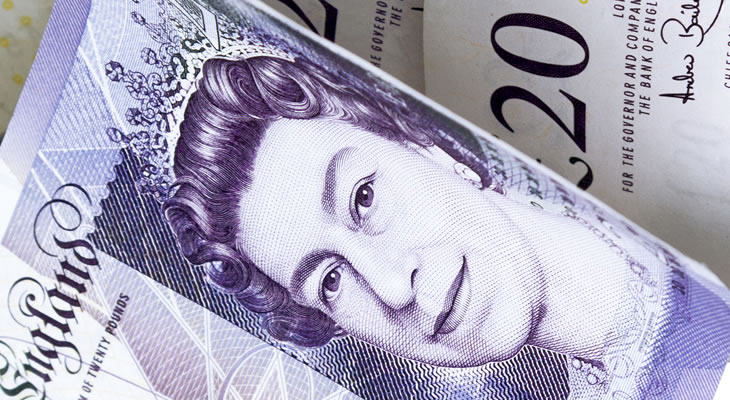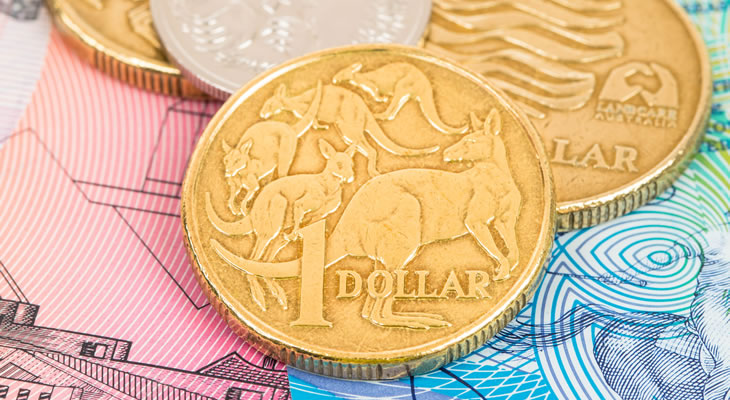- Pound strengthened on BoE ‘Brexit’ warning
- AUD weakened by hawkish Fed commentary
- GBP/AUD exchange rate trends higher despite sharp construction output contraction
- Lower Australian employment forecast to soften Australian Dollar
Pound Sterling (GBP) Exchange Rate Supported by Unanimous BoE Policy Decision
Demand for the Australian Dollar (AUD) dipped further on Thursday morning in response to the latest Consumer Inflation Expectation survey. Domestic expectations slipped from 3.6% to 3.2% in May, suggesting that concerns over the outlook of the Australian economy have continued to build. This weaker showing increased the odds of the Reserve Bank of Australia (RBA) opting to cut interest rates again sooner rather than later, pushing the ‘Aussie’ lower across the board.
The Pound Sterling to Australian Dollar (GBP/AUD) exchange rate climbed still higher as a result of the Bank of England’s (BoE) May policy meeting. Policymakers voted unanimously in favour of keeping interest rates at 0.5% for another month, allaying worries that one or two members of the Monetary Policy Committee (MPC) were considering a dovish revolt. This move kept hopes alive that the BoE could still raise interest rates before the end of the year, assuming that the UK votes to remain within the EU.
Despite the central bank lowering its growth forecast for 2016 from 2.2% to 2.0% this did not particularly weigh on the Pound, with attention primarily focused on comments from Governor Mark Carney regarding the potential impact of a ‘Brexit’. As researchers at ING stated:
‘Should the UK actually vote to leave then the BoE warned that it would raise risk premia and hurt capital inflows, it may also lead to the Pound depreciating further, possibly “sharply” which in combination would lead to inflation moving higher and a lead to a weaker outlook for growth. Carney went further in the press conference, stating that the “biggest risk to the forecasts concern the referendum” and that a vote to leave would have “material effects”.’
With markets assessing that this commentary could prompt more voters towards the ‘Remain’ camp, the Pound strengthened sharply in response.
Hawkish Fed Speeches Diminish Appeal of Australian Dollar (AUD)
Overnight words from Kansas City Fed President Esther George helped to drive the ‘Aussie’ lower and send the US Dollar (USD) higher. Currently the most hawkish member of the Federal Open Market Committee (FOMC), having voted for a rate hike in March and April, George reiterated the opinion that interest rates are too low at present. This encouraged speculation that rates could be raised sooner rather than later, particularly as the Boston and Cleveland Fed Presidents both took a somewhat hawkish tone in separate comments.
As commodity-currency demand naturally sank in response to increased bets of a near term interest rate hike, this saw the Australian Dollar fall further out of favour with investors ahead of the weekend. A faster pace of Fed tightening would likely increase the case for more easing from the RBA, a prospect that has not encouraged the antipodean currency.
Confidence in the Pound, meanwhile, declined on the back of the latest UK Construction Output figures. With output contracting far more severely than expected at -4.5% on the year, the health of the domestic construction industry seemed more in question. This weaker showing could also negatively impact the UK’s first quarter GDP, as the first estimate had been based on a smaller decline in the sector.
Nevertheless the GBP/AUD exchange rate received an extra boost ahead of the weekend as the IMF issued a renewed warning on the potential fallout of a vote to leave the EU. The organisation warned of a possible crash in UK house prices, while also indicating the likelihood of a strong rebound in growth in the event of a ‘Remain’ camp victory. This encouraged some additional support for Sterling, as investors continue to bet that these high-profile interventions will encourage the UK to remain a part of the EU.

GBP/AUD Exchange Rate Forecast: UK Inflation & Aussie Employment in Focus
After the weekend the Pound could be prompted lower across the board in response to the UK’s April Consumer Price Index report. Inflationary pressure is forecast to have dipped from 0.5% to 0.4% on the year, a sign that will not encourage hopes of the BoE taking a more hawkish view on monetary policy.
The appeal of the ‘Aussie’, meanwhile, will be tied to the latest Australian employment stats. However, the impact of a more disappointing report could be muted. Sean Callow of Westpac noted:
‘The RBA will be braced for a low wages reading though a downside surprise such as 2.0-2.1% y/y would produce renewed AUD selling. The jobs report is a lottery as usual though the RBA’s focus does seem to be inflation, not the pace of growth right now.’
Stronger jobs or wage growth, on the other hand, could push the Australian Dollar higher against rivals, offering discouragement on bets that the RBA will cut rates again imminently.
Current GBP, AUD Exchange Rates
At the time of writing, the Pound Sterling to Australian Dollar (GBP/AUD) exchange rate was trending higher in the region of 1.9771, while the Australian Dollar to Pound Sterling (AUD/GBP) pairing was slumped around 0.5056.


Comments are closed.